

All of this sounds simple at first, even in practice. Instead of a water block, simply place a flat heatpipe on a large heat sink and optionally let water pass through to absorb the waste heat and transfer it. Asus uses its own design for this board. The two 8-pin sockets for the external power supply are followed by two coils in the input area for smoothing the tips.
Asus relies on a design of 5+2 phases, with the 5 phases for the GPU duplicated... Benchmarks in 2560 x 1440 pixels
We have deliberately dispensed with Full HD (1920 x 1080p) as the card runs into the CPU limit even in the highest settings. In WQHD (2560 x 1440 pixels), on the other hand, the actual working environment and the kar... Benchmarks in 3840 x 2160 pixels
The card is also significantly faster in this high resolution than a GeForce GTX 1080 Founders Edition or GeForce GTX 1080 Founders Edition. TitanX (Pascal) in Nvidia reference design. Overall, many titles are quite good in UH... Power consumption at different loads
We measured the power consumption of the air-cooled map. When operated as a water-cooled card, the power consumption at full load is approx. 3-5 watts lower (fan).
Compliance with the main... Overclocking
The overclocking with air cooling is almost hopeless, because the card is already quite neatly overclocked from the factory and thus reaches its physical limits, especially in the closed housing. With a good water cool... Cooling system and backplate
The special feature is the use of a hybrid system that can be operated both in a water cooling system and only alone with air cooling. The advantage is that the buyer is... Summary
There is no egg-laying woolly milk sow, even with graphics cards. After this test, we must hold this honestly and fairly. The Asus GTX 1080 Ti ROG Poseidon Platinum has no serious flaws and does nothing ...
Power consumption at different loads
We measured the power consumption of the air-cooled map. When operated as a water-cooled card, the power consumption at full load is approx. 3-5 watts lower (fan).
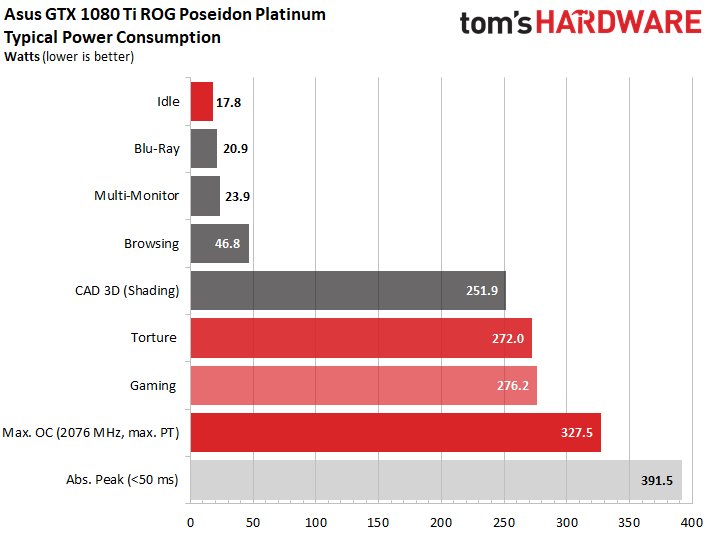
Compliance with the standard on the motherboard slot
With a maximum of 3.3 amps (torture) and 2.7 amps (gaming), the card is far below what the PCI SIG sets with a maximum of 5 amps (66 watts) for the 12 volt rail on the motherboard slot.
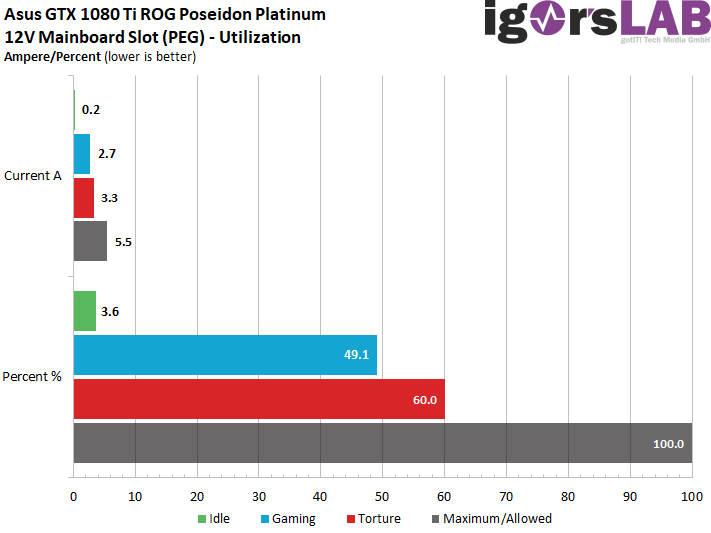
Detailed graphics: power consumption and currents
For a better illustration, we have also recorded all measurement results as detailed curves in the graphs below:
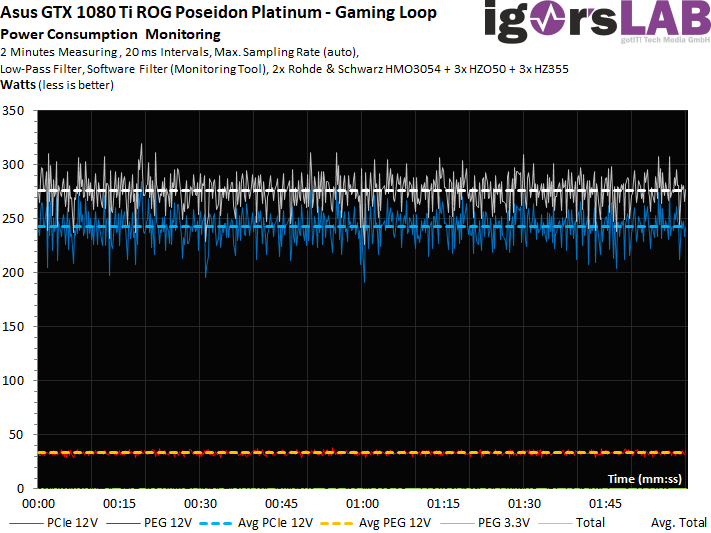
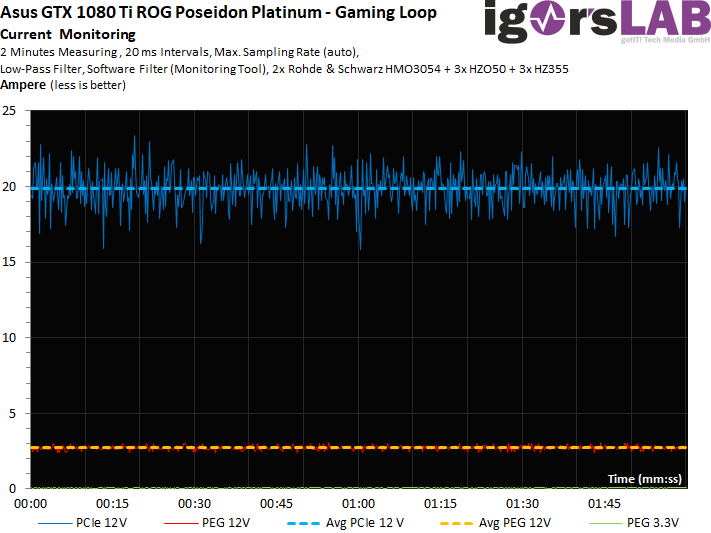
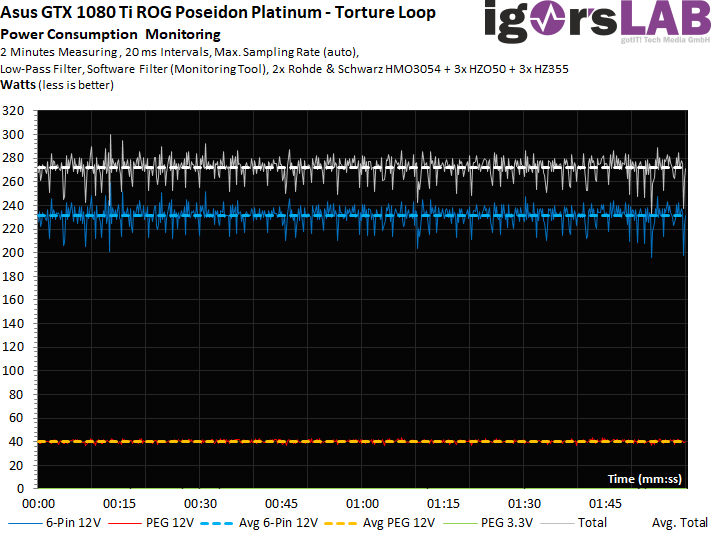
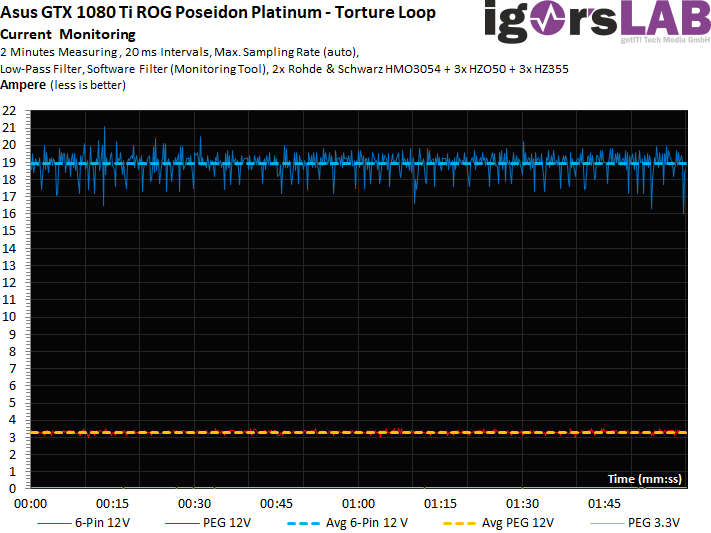






































Kommentieren